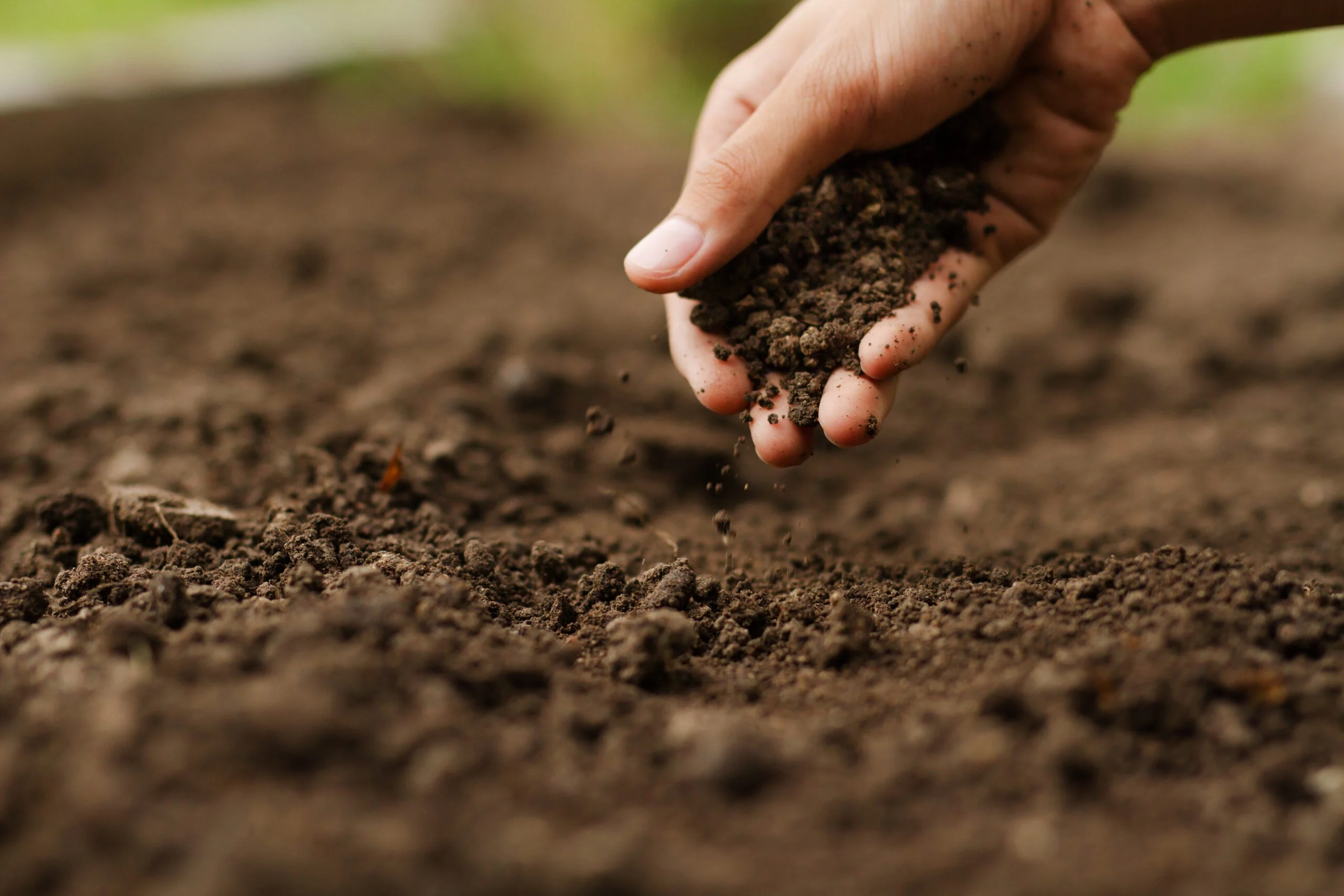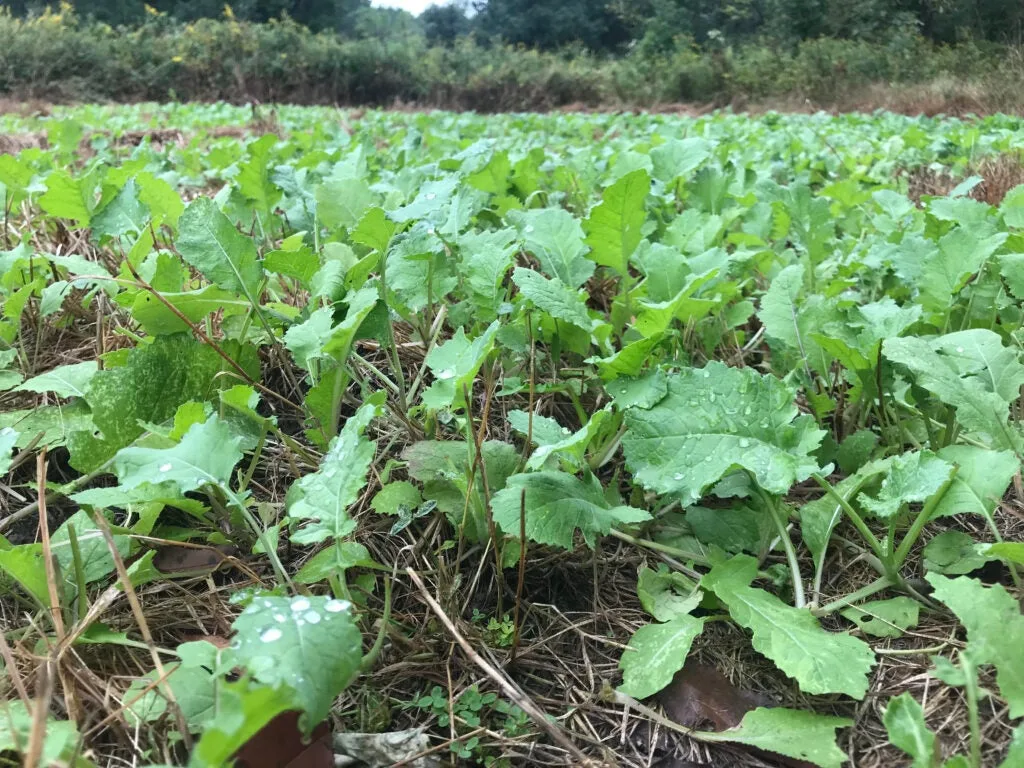As spring inches closer, a lot of folks are pulling their fishing gear together and prepping for the coming turkey season. But some of us never stop thinking about whitetails and are already working out when to plant deer food plots this off season for even better hunting in the fall.
Spring is the season for hope, after all, so what better time to start prepping soil and planting seeds with an eye toward transforming a few plots of dirt into the perfect whitetail buffet. The first step is working out a timeline for when to plant deer food plots, whether we are talking annuals or perennials—and, for that, we’ve got you covered. Here’s your guide.
Learn how to subscribe to the new Field & Stream magazine here!
When to Plant Deer Food Plots: Table of Contents
Test the Soil First
A Basic Timeline for When To Plant Popular Plots
Late Winter to Early Spring Plantings
Spring Warmup to Early Summer Plantings
Midsummer Plantings
Late-Summer to Early Fall Plantings
Have a Backup Plan
Test the Soil Before You Start Planting

Now is the time to take a soil sample and get it tested. piyaset / Adobe Stock
You probably can’t wait to get some seeds in the ground, but it’s critical that you do the prep work first. You’ve heard it before but it bears repeating. “Cliche or not, the first vital step is getting your soil tested for pH and nutrient levels,” says,” says Brandon Self of the Whitetail Institute
. “A neutral pH of between 6.5 and 7.5 is critical to optimize your plots. Ideally, these tests should be done in the fall, but even doing it in the early spring can really boost your plot’s potential. With a simple soil test kit, you can quickly know what fertilizer to add and how much of each nutrient (NPK – nitrogen, phosphorus, and potassium), as well as how much lime you may need to raise your pH.” The Whitetail Institute
sells test kits, or you can get one from your local ag-supply store. Your plan should be to add lime and disc as soon as possible to allow it to do its work neutralizing your soil.
A Basic Timeline for When To Plant Popular Plots
Let’s start with a quick and dirty timeline for different plants depending on where you live, and then we’ll get into the nitty gritty after that. So, if you’re just looking for rough estimates for the most popular plantings, here it is.
Corn
North: Late May to Mid June
Central: Mid May to Early June
South: Late April to May
Soybeans
North: Late May to Mid June
Central: Mid May to Early June
South: Late April or May
Brassicas
North: Late June through July
Central: Late July into August
South: September or October
Cereal Grains
North: August to Early September
Central: Late-August and September
South: September or any time later.
Now let’s get into a more thorough explanation, including other forage varieties and planting techniques, like starting with a cover crop.
When to Plant Deer Food Plots: Late Winter to Early Spring

The repeated freezing and thawing of the ground in late winter and early spring works small perennial seeds into the ground naturally. Whitetail Institute
According to Jared Van Hees of the Vitalize Seed Company
, if you really want to get a jump start, try frost seeding perennials. Your key indicator for timing this is the transition from winter to spring in your specific area—when warmer days are starting but temperatures are still freezing at night. Popular perennials like clover and chicory only need contact with the soil to germinate, so they can be cast while the ground is still somewhat frozen. Also, the heaving of the soil as it freezes and thaws this time of year helps give seeds better soil contact. Broadcast them into bare or thin patches in existing food plots to thicken them up, or start a new plot into already prepared soil or into fall cover crops.
When to Plant Deer Food Plots: Spring Warmup to Early Summer
Annual Food Plots
Annuals are typically larger seeds that need to be buried and cannot be planted until the soil warms. According to Self, the best indication of when you can plant annuals is by paying attention to the local experts—that is, when farmers start planting theirs. That said, a 60-degree soil temperature is a safe bet and can be measured with a simple soil thermometer
or typing in your zip code to a soil temperature map
. Once you’ve established that the soil is warm enough to accept seed, the steps are to add the lime, disc it into the soil (if you haven’t already), add your determined mix of fertilizer, and then use a smoothing implement like a cultipacker or simple drag to create a good seed bed.
In northern states, soil may not reach 60 degrees until the end of May or into June, which should be plenty of time for annuals like corn and beans to mature before hunting season. Remember too that there’s no reason to be in too much of a hurry. Check the maturity timeline listed on the seed packet, and simply count backward from when you want your annual plot to mature. For example, if you want your soybeans to mature in early October and they have a 90-day maturity, then late June or early July is your planting window
Cover Crops
Planting cover crops like cereal rye the previous fall or buckwheat in early spring is a great way to add nutrients, retain moisture, and improve your soil according to Van Hees. He uses a mix of peas, clover, sunhemp, and other nitrogen-rich plants to add biomass (fertilizer) to the soil. Spring cover plots can often be planted much earlier than annuals (check the seed pack for required soil temperature), and they provide food for deer while bucks are developing antlers and fawns are growing; they also keep weeds at bay and prep the soil for your fall hunting plot. You basically let them grow through spring and early summer, then terminate them when you are ready to plant your fall hunting-season plots.
When to Plant Deer Food Plots: Mid-Summer

Brassicas coming nicely in a no-till plot. Jared Van Hees
Cover crops require no maintenance in summer, but perennial stands like clover and chicory can be mowed a time or two to promote growth and knock back weeds. You can also use some specific herbicides. Established stands of corn and beans that are “Roundup ready” can be sprayed, but this depends on your tolerance for chemicals and prevalence of weeds. If you haven’t planted corn or beans by by mid-summer, you need to either get going right away or change plans and plant something that matures faster. You’ll want to plant brassicas, for example, at least 50 or 60 days before the first frost, which in northern states means planting in late July or August. Farther south, you can go later.
When to Plant Deer Food Plots: Late Summer and Early Fall
If you planted a cover crop, mid- to late-summer in the northern half of the country and late-summer to early fall in the southern half is the time to terminate this and plant your hunting season plot. Van Hees spreads his fall mix of annuals—including wheat, oats, peas, clover, chicory, radishes, and various turnips—into a standing cover crop, then he uses a cultipacker and crimper to knock this down. This dead matter acts as a mulch that helps seeds germinate without discing and is a great no-till option
.
If you decide to disc and plant on freshly exposed dirt, Self recommends a blend of brassica and turnips called Tall Tine Tubers
. Whatever you choose, you need a source of good leafy greens for fall and an option like bulbs or tubers for nutrition later into winter. Plan for planting 60 to 90 days before the first frost. So again, figure this time period and count backwards to get your timing just right.
Make Sure You Have a Backup Plan

A buck feeds in a late-planted field of cereal grains.
If everything goes to plan, then you’re set for hunting season. But sometimes a drought, flood, rampant weeds, or even pests can destroy a food plot. What do you do then? A good backup plan is a fast-growing cereal grain like rye or oats that you can quickly get in the ground in early fall. This will supply some attractive greens and also act as a cover crop through to the next spring. But what is much more likely to happen, if you follow the plan above, is you’ll have an ideal whitetail buffet that will attract deer all through the fall hunting season and beyond.


